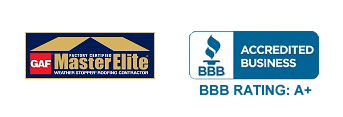
Owners of buildings with flat roofs that need replacing will find themselves evaluating the different types of flat roof materials available in order to make an informed decision. Until the 1980s, the choice was easy, since tar and pitch asphalt materials dominated the market. Today, there are three basic types of flexible membranes that are widely used on flat roofs: thermoset, thermoplastic and modified bitumen. A Sugar Land roofing professional can help homeowners understand which type is best for a particular application.
Thermoset membranes are made from rubber polymers and are therefore referred to as "rubber roofs" by many individuals. Ethelyne propylene diene monomer (EPDM) is a widely used material of which many single ply flexible membranes are composed. EPDM typically incorporates carbon black into the material to block ultraviolet radiation. Adhesives are used to form watertight seals at the membrane overlaps. When these seals cure, they provide the effect of a one piece roof.
Thermoplastic membranes are created from plastic polymers. Like the thermoset type, they are single ply membranes. However, the seams are welded together with the use of heat, or solvents may be used that result in chemical welding. Two of the most common materials used are polyvinyl chloride (PVC) and thermoplastic polyolefin (TPO).
Roofers from Houston Restoration Services of Sugar Land TX can answer any question about commercial roofing or residential roofing.
Often, polyester or fiberglass is used as a component to increase strength. Thermoplastic membranes can be difficult to coat. Special primers and coatings must be used based on the particular material of the membrane. It is sometimes difficult to distinguish these materials from one another, so test patches are often used before coating the entire roof. White is often the color of choice for these coatings and functions to minimize heat absorption from the sun.
Modified bitumen is a type of roofing membrane that combines asphalt with various types of reinforcement modifiers that are often sandwiched together. To join the seams, a torch is used to melt the asphalt and form a seal. This process is sometimes referred to by roofers as "torch down." The two primary types of modified bitumen membranes are atactic polypropylene (APP) and styrene butadiene styrene (SBS).
APP membranes utilize a plastic polymer to increase resistance to ultraviolet radiation and to increase flexibility in cold temperatures. SBS materials form a network of polymers that give the material a rubber like feature. This improves the material's resistance to breakdown due to weathering. However, SBS membranes will need a coating for ultraviolet protection applied in the field if it has not been applied at the factory. Modified bitumen membranes are considered single ply, despite requiring a base sheet underneath them.








